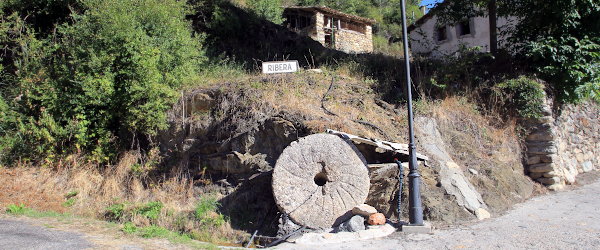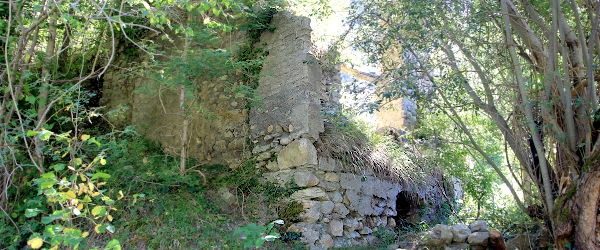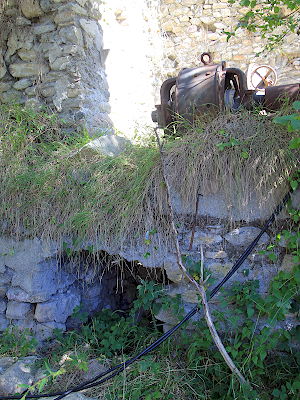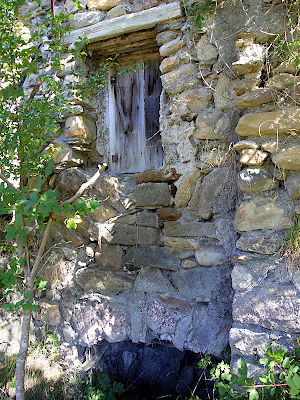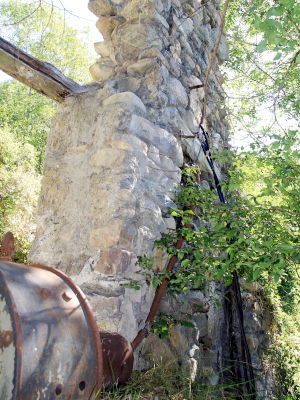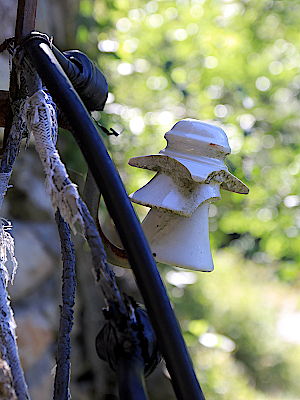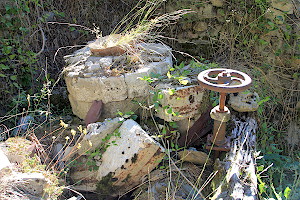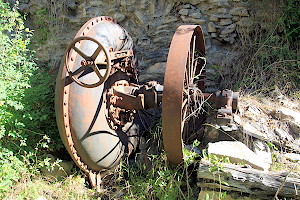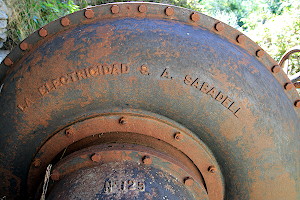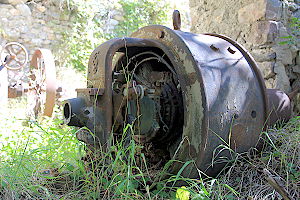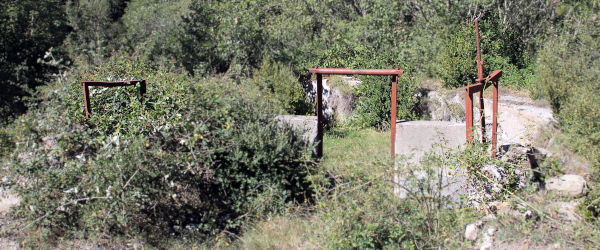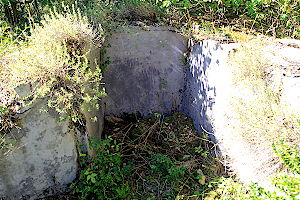Path: Introduction -
Visit the mills; catalogue - Molino de Ribera de Castanesa

Mills in Altoaragón - harinero, central eléctrica
Ribera de Castanesa

Ribera is situated in the Ribagorza region
of Huesca Province. It belonged to which itself became part
of in 1966.
You'll find it north of which can be found on the N 260 between
and .
Ribera lies in the idyllic valley of the Río Baliera. Plans exist to sacrifice this beautiful landscape
to the expansion of Cerler ski resort with among other things about 2500 houses and 3000 hotel rooms and in Ribera
parking space for 1600 vehicles.
At the entrance of Ribera you will be welcomed by a decommissioned stone (1). Walk between the houses and cross the river. The mill is only a few steps away.
At the entrance of Ribera you will be welcomed by a decommissioned stone (1). Walk between the houses and cross the river. The mill is only a few steps away.
Pictures: 22.VIII.2017
